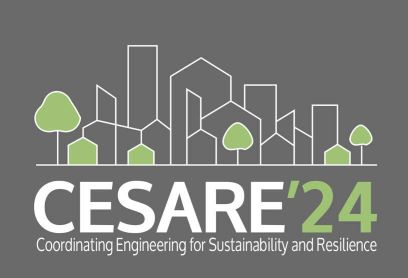Speaker
Description
An essential part of the solution to reduce building-related carbon emissions and improving energy resiliency is the integration of renewable energy sources in buildings to achieve net-zero, diversifying building energy sources [1]. Renewable building integration is typically achieved with photovoltaic (PV) panels which convert about 20% of the solar radiation reaching panels into electricity while the rest is converted into heat. Using hybrid photovoltaic and thermal (PV/T) panels instead allows the extraction of much of the normally wasted heat with a fluid, which cools the photovoltaic cells and increases their electricity production. The extracted heat can then be used to meet building heating loads. Nevertheless, unglazed PV/T thermal performance can be highly dependent on exterior conditions common in cold climates, where low temperatures and solar radiation can substantially affect performance and heat losses to the outside [2]. In this way, optimal design and control strategies are essential to maximize the performance of these systems [3] as well as meet building loads and peak demand when most needed [4].
This study aims to improve the integration and optimization of liquid-based PV/T-heat pump systems to meet building loads for cold climate operation. Design and smart control strategies are developed to improve performance and resiliency for cold weather conditions with unpredictable intermittent and lowered solar radiation to maximize building energy flexibility and efficiency. In this way, the proposed approach balances maximizing the efficiency and available free energy of the system while managing the stored energy to reduce building loads and peak demand. The methodology is applied to a case study research building in Canada with a newly retrofitted façade-integrated PV/T system.
[1] O. Temby et al., ‘Building-Integrated Photovoltaics: Distributed Energy Development for Urban Sustainability’, Environment: Science and Policy for Sustainable Development, vol. 56, no. 6, pp. 4–17, Nov. 2014.
[2] A. Kazemian, M. Hosseinzadeh, M. Sardarabadi, and M. Passandideh-Fard, ‘Effect of glass cover and working fluid on the performance of photovoltaic thermal (PVT) system: An experimental study’, Solar Energy, vol. 173, pp. 1002–1010, Oct. 2018.
[3] M. Qu, X. Yan, H. Wang, Y. Hei, H. Liu, and Z. Li, ‘Energy, exergy, economic and environmental analysis of photovoltaic/thermal integrated water source heat pump water heater’, Renewable Energy, vol. 194, pp. 1084–1097, Jul. 2022.
[4] H. Ren, Y. Sun, A. K. Albdoor, V. V. Tyagi, A. K. Pandey, and Z. Ma, ‘Improving energy flexibility of a net-zero energy house using a solar-assisted air conditioning system with thermal energy storage and demand-side management’, Applied Energy, vol. 285, p. 116433, Mar. 2021.
| Topics | Integration of renewable energy at building and small urban area scales |
|---|---|
| Keywords | photovoltaic/thermal collector, heat pump, control strategies, cold climate |

